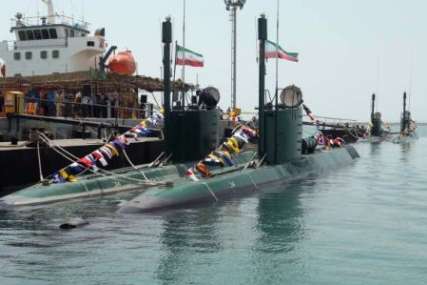ID :
292032
Sat, 07/06/2013 - 12:30
Auther :
Shortlink :
https://oananews.org//node/292032
The shortlink copeid
Iran Gaining More Power, Influence In Region: US Think Tank

Tehran, July 6, IRNA – A US military think tank in its latest report has said that Iran was expanding its naval activities to further reach its strategic goals and gain more power and influence in the region.
Tehran ˈhas among its strategic objectives expanding its power in the Middle East and rolling back U.S. influence in the region,ˈ the US Institute for the Study of War (ISW) said in a report wrote by Christopher Harmer.
ˈThe totality of evidence indicates that Iranian maritime activity in support of the Iranian strategic objective of regional power and influence is evolving and expanding, not contracting.
ˈThe Iranian regime is not in decline, and it is not a state that is isolated from the international community. Iranian strategic ambition is expanding, and the Iranian regime is using its maritime entities, namely, IRIN, IRGCN, and IRISL, to realize that strategic ambition.ˈ
Harmer added, ˈIranian leadership considers the Persian Gulf and much of Central Asia to be a “near abroad” where Iranian culture and interests should have significant influence.ˈ
He added recent developments have confirmed that Iran was committed to its goals and ˈhas a strategy to realize this outcome, and is making significant progress towards it.ˈ
Iran ˈclearly has ambitions to be a significant and relevant actor on the global stage, whose capabilities and intentions must be taken into consideration by superpower nations,ˈ said the author of the ISWˈs report.
He noted that Iran’s maritime forces, including the Islamic Republic of Iran Navy (IRIN) and the Islamic Revolutionary Guards Corps Navy (IRGCN), as well as its commercial shipping fleet and the Islamic Republic of Iran Shipping Lines (IRISL), ˈare being used in specific, definable ways to further Iran’s strategic objectives.
In the recent past, Iran has decreased the size, scope, and geographic reach of several of its maritime exercises. ˈ
Referring to Iranˈs maritime exercises, the report said, ˈConsidered in isolation, a reduction in maritime exercises might appear to be evidence that Iran’s maritime capability was declining, or that it does not have adequate resources to execute maritime operations in support of its strategic objectives.ˈ
According to the report, Iran has taken ˈthree distinct actions that reflect its broad, strategic ambitions.
ˈFirst, Iran has re-prioritized some of its local maritime exercises towards solidifying or expanding territorial claims in the Persian Gulf, Strait of Hormuz, and Caspian Sea.
ˈSecond, IRIN has significantly increased its long-range deployments in support of strategic relationships with key partners.
ˈThird, at the same time that IRISL is being used to support Iranian objectives logistically, IRIN may also be conducting similar operations.ˈ
The author noted that the trends indicated Iran was modifying and expanding its maritime activities in support of strategic objectives.
As for Iranˈs naval activities in the Caspian Sea region, Harmer said ˈin 2012, Iran launched the destroyer Jamaran-2 in the Caspian Sea, and also conducted a maritime mine-laying and mine-sweeping exercise.
The author added that launching of the ship and the exercises were clearly designed to increase Iranˈs influence in the region.
Referring to Iran-Russia relations, the author said the two capitals ˈhave common interests in the Caspian Sea and Caucasus region.
ˈAt the same time IRIN is conducting long range deployments to the Pacific and solidifying Iran’s relationship with China, IRIN is increasing support to Russian Navy ships on long deployments.
ˈThe totality of evidence indicates that Iranian maritime activity in support of the Iranian strategic objective of regional power and influence is evolving and expanding, not contracting,ˈ the author concluded./end





